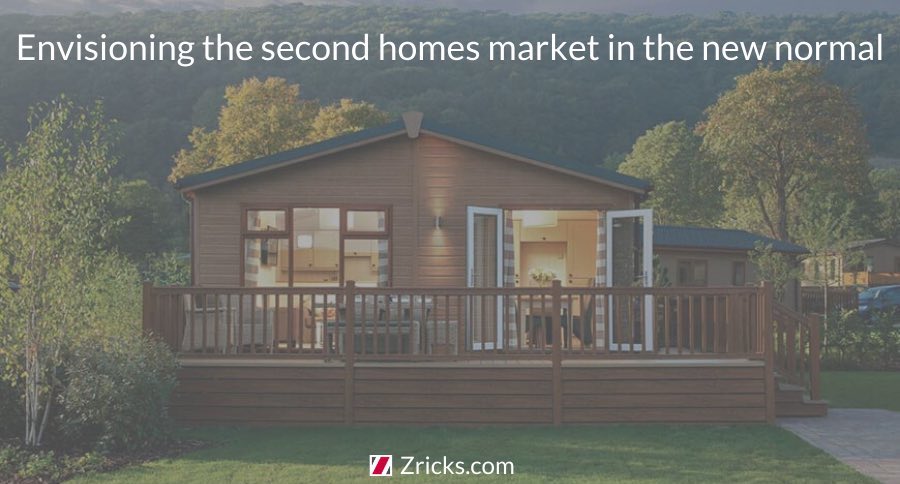Envisioning the second homes market in the new normal
Share Envisioning the second homes market in the new normal
Ever since the coronavirus has touched the Indian shores, it has completely altered the short-term investment patterns. But it has also strengthened the avenues for long-term home investment with buyers and investors likely to continue investing in second homes. In spite of the pandemic impacts having shaken the overall economy, it has provided some succor to the domain of architecture and interior design. Second-home markets across the country have seen record seasons for both sales and rentals, and this heightened demand calls for aesthetically designed and architecturally defined spaces.
Below mentioned are reasons on how the pandemic will alter the second home markets and what ‘shelter’ actually means in the new normal:
Strategic shift in buyer aspirations: The pandemic has left a deeper impression on urban homeowners who are reconsidering their housing options. The hope of owning a second home with an aim to escape the city life or planning an eventual retirement there were previous buyer aspirations. The outbreak of the global crisis has given rise to a more urgent motivation – emphasis on upholding wellness by choosing to reside in homes away from the contaminated zones. It has urged modern-day buyers to drift towards well-designed second homes in the city or in the outskirts.
Client spending will witness a change: Post-pandemic consumption looks hopeful. There will be a surge in purchasing once the economy is back and people will want to invest in their residences more than ever. The post-COVID consumer will be more attuned to flaws in their homes after spending such a long-time being home-bound. Suddenly the little aspects of home décor and interiors that they have overlooked for years will become big things that must be fixed now and they will be willing to pay a premium to have it done right.
Demand for design-high second homes climbs up the ladder: Highly customizable, these spaces can be designed keeping in mind the current lockdown situation that has compelled corporates to function from homes. The lockdown imposed WFH option and the mounting safety concerns have been re-igniting urban India's interest in opting for homes away from home adorned with well-designed interiors. Studio apartments with an in-built workstation or an expanded mezzanine suspended beneath the homes trussed roof to provide open workstations are a couple of features on offer by interior designers and architects. Stairways, skylights and internal courtyards can lend a contemporary architectural feel making second homes an investment-worthy decision. Openings carved into the roof coupled with glass-walled rooms to ensure plenty of natural light can make these homes a perfect place to escape from the daily grind.
Home-cum-office trend is back: The pandemic has compelled working from home to become the new normal during the current times. The home-office trend which was popular traditionally but took a backseat due to the commercial revolution is again doing the rounds that has actually led the second homes to become the primary homes for a lot of owners. This is the perfect time for the architecture and interior design sectors to brace themselves to cater to this new corporate requirement. The earlier trend of vacation homes was actually about moving away from your work culture however, keeping in mind the current scenario, these homes must be designed by taking into consideration the needs of the corporates. Second homes which initially had more of open spaces and landscapes to lend it a holiday vibe, now need to have a provision of a working area for the working-from-home set of residents. Along with designing a home office with good connectivity, designers are also planning to incorporate libraries to enable the residents in unwinding themselves.
To work in this direction, designers and architects are planning to carve out second homes with dedicated workspace interior solutions like home interiors befitting both residential and commercial requirements like highlighting on the modularity of spaces within the house, office-home furniture fixtures like work tables with adjustable heights and ergonomic chairs, video conferencing facility, apt lighting that one would expect in an office space and a need to re-evaluate the interiors spatial configuration, flexibility being the key. This is extremely necessary to refine the entire work-from-home experience.
Color trends will witness a surge: The global crisis has justifiably incited a feeling of discontent, grief, and stress among homebuyers, who are now longing for colors and patterns that impart a sense of hope and comfort. Second-home buyers are bound to take a closer look at their spaces to understand how they function, and how they can be transmuted into a sanctuary in these indeterminate times. Shades like pink, greys, greens and beige are the colours which are being extensively used. Researches have witnessed a growth of more biophilic design in home interiors which is a movement toward hues that mimic the sensation of being amidst nature. Second-home buyers would want to opt for such green hues in hopes to encourage internal peace in an age where emotional and physical well-being are critical aspects.
There will soon emerge a need to integrate second homes in ways that reflect living in a post-COVID world. When a situation feels momentary, it tends to feed fatigue since everyone remains in a holding pattern. Architects and interior designers have been making use of this energy to develop new and smart patterns of design suiting the post-pandemic second-home buyer.
Request a Call Back

